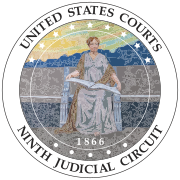
Trademark dilution is a trademark law concept giving the owner of a famous trademark standing to forbid others from using that mark in a way that would lessen its uniqueness. In most cases, trademark dilution involves an unauthorized use of another's trademark on products that do not compete with, and have little connection with, those of the trademark owner. For example, a famous trademark used by one company to refer to hair care products might be diluted if another company began using a similar mark to refer to breakfast cereals or spark plugs.

In re Aimster Copyright Litigation, 334 F.3d 643, was a case in which the United States Court of Appeals for the Seventh Circuit addressed copyright infringement claims brought against Aimster, concluding that a preliminary injunction against the file-sharing service was appropriate because the copyright owners were likely to prevail on their claims of contributory infringement, and that the services could have non-infringing users was insufficient reason to reverse the district court's decision. The appellate court also noted that the defendant could have limited the quantity of the infringements if it had eliminated an encryption system feature, and if it had monitored the use of its systems. This made it so that the defense did not fall within the safe harbor of 17 U.S.C. § 512(i). and could not be used as an excuse to not know about the infringement. In addition, the court decided that the harm done to the plaintiff was irreparable and outweighed any harm to the defendant created by the injunction.
Nominative use, also "nominative fair use", is a legal doctrine that provides an affirmative defense to trademark infringement as enunciated by the United States Ninth Circuit, by which a person may use the trademark of another as a reference to describe the other product, or to compare it to their own. Nominative use may be considered to be either related to, or a type of "trademark fair use". All "trademark fair use" doctrines, however classified, are distinct from the fair use doctrine in copyright law. However, the fair use of a trademark may be protected under copyright laws depending on the complexity or creativity of the mark as a design logo.

Playboy Enterprises, Inc. v. Welles, 279 F.3d 796, was a ruling at the United States Court of Appeals for the Ninth Circuit. The ruling was an important early precedent on the nominative use of trademarked terms for self-identification on the World Wide Web.

People for the Ethical Treatment of Animals v. Doughney, 263 F.3d 359, was an Internet domain trademark infringement decision by the United States Court of Appeals for the Fourth Circuit. The ruling became an early precedent on the nature of domain names as both trademarked intellectual property and free speech.

A trademark is a type of intellectual property consisting of a recognizable sign, design, or expression that identifies a product or service from a particular source and distinguishes it from others. A trademark owner can be an individual, business organization, or any legal entity. A trademark may be located on a package, a label, a voucher, or on the product itself. Trademarks used to identify services are sometimes called service marks.

Register.com v. Verio, 356 F.3d 393, was a decision of the United States Court of Appeals for the Second Circuit that addressed several issues relevant to Internet law, such as browse wrap licensing, trespass to servers, and enforcement of the policies of the Internet Corporation for Assigned Names and Numbers (ICANN). The decision upheld the ruling of a lower court which prevented a provider of web development services from automatically harvesting publicly available registration data from a domain name registrar's servers for advertising purposes.

Sega Enterprises Ltd. v. Accolade, Inc., 977 F.2d 1510, is a case in which the United States Court of Appeals for the Ninth Circuit applied American intellectual property law to the reverse engineering of computer software. Stemming from the publishing of several Sega Genesis games by video game publisher Accolade, which had disassembled Genesis software in order to publish games without being licensed by Sega, the case involved several overlapping issues, including the scope of copyright, permissible uses for trademarks, and the scope of the fair use doctrine for computer code.

Vernor v. Autodesk, Inc. was a case in the United States District Court for the Western District of Washington regarding the applicability of the first-sale doctrine to software sold under the terms of so-called "shrinkwrap licensing." The court held that when the transfer of software to the purchaser materially resembled a sale it was, in fact, a "sale with restrictions on use" giving rise to a right to resell the copy under the first-sale doctrine. As such, Autodesk could not pursue an action for copyright infringement against Vernor, who sought to resell used versions of its software on eBay. The decision was appealed to the United States Court of Appeals for the Ninth Circuit, which issued a decision on September 10, 2010, reversing the first-sale doctrine ruling and remanding for further proceedings on the misuse of copyright claim. The Ninth Circuit's decision asserted that its ruling was compelled by Ninth Circuit precedent, but observed that the policy considerations involved in the case might affect motion pictures and libraries as well as sales of used software.

Initial interest confusion is a legal doctrine under trademark law that permits a finding of infringement when there is temporary confusion that is dispelled before the purchase is made. Generally, trademark infringement is based on the likelihood of confusion for a consumer in the marketplace. This likelihood is typically determined using a multi-factor test that includes factors like the strength of the mark and evidence of any actual confusion. However, trademark infringement that relies on Initial interest confusion does not require a likelihood of confusion at the time of sale; the mark must only capture the consumer's initial attention.

Planned Parenthood Federation of America, Inc. v. Bucci, 1997 WL 133313, was a court ruling at the United States District Court for the Southern District of New York. The ruling was an important early precedent on the trademark value of a domain name on the World Wide Web, and established the theory that hosting a site under a domain name that reflected the registered trademark of a different party constituted trademark infringement.

Google, Inc. v. American Blind and Wallpaper Factory, Inc., No. 5:03-cv-05340, was a decision of the United States District Court for the Northern District of California that challenged the legality of Google's AdWords program. The court concluded that, pending the outcome of a jury trial, Google AdWords may be in violation of trademark law because it (1) allowed arbitrary advertisers to key their ads to American Blind's trademarks and (2) may confuse search-engine users initially interested in visiting American Blind's website into visiting its competitors' websites.

The case Brookfield Communications, Inc. v. West Coast Entertainment Corporation, 174 F.3d 1036, heard by the United States Court of Appeals for the Ninth Circuit, established that trademark infringement could occur through the use of trademarked terms in the HTML metatags of web pages when initial interest confusion was likely to result.
Inwood Laboratories Inc. v. Ives Laboratories, Inc., 456 U.S. 844 (1982), is a United States Supreme Court case, in which the Court confirmed the application of and set out a test for contributory trademark liability under § 32 of the Lanham Act.

Rescuecom Corp. v. Google Inc. 562 F.3d 123, was a case at the United States Court of Appeals for the Second Circuit, in which the court held that recommending a trademark for keyword advertising was a commercial use of the trademark, and could constitute trademark infringement.

Network Automation, Inc. v. Advanced Systems Concepts, Inc., 638 F.3d 1137 was a court case decided on March 8, 2011, where the United States Court of Appeals for the Ninth Circuit ruled that the use of a competitor's trademark as an Internet search advertising keyword did not constitute trademark infringement. In the case, Network Automation advertised their own competing product in search queries that contained Advanced Systems Concepts' "ActiveBatch" trademark. In determining whether trademark infringement occurred, the court evaluated factors relevant to the likelihood of customer confusion outlined in AMF Inc. v. Sleekcraft Boats and concluded that confusion was unlikely.
Moseley v. V Secret Catalogue, Inc., 537 U.S. 418 (2003), is a decision by the Supreme Court of the United States holding that, under the Federal Trademark Dilution Act, a claim of trademark dilution requires proof of actual dilution, not merely a likelihood of dilution. This decision was later superseded by the Trademark Dilution Revision Act of 2006 (TDRA).

Rosetta Stone v. Google, 676 F.3d 144 was a decision of the United States Court of Appeals for the Fourth Circuit that challenged the legality of Google's AdWords program. The Court overturned a grant of summary judgment for Google that had held Google AdWords was not a violation of trademark law.

Dr. Seuss Enters., L.P. v. Penguin Books USA, Inc. 109 F.3d 1394 is a copyright lawsuit where the court determined if a copy of an original work's artistic style, plot, themes, and certain key character elements qualified as fair use. Penguin Books published a book titled The Cat NOT in the Hat! A Parody by Dr. Juice that use the artistic style, themes and characteristics of Dr. Seuss books to tell the story of the O. J. Simpson murder case. Dr. Seuss Enterprises accuse the publisher of copyright and trademark infringement.









